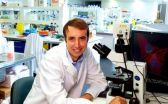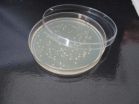Scientists at A*STAR's Genome Institute of Singapore catch evolving germs and cancer cells early
GIS' first-of-its-kind ultrafast detection of microbe and cancer cell mutations could lead to more precise investigations of therapeutic treatments
2013-03-07
(Press-News.org) Scientists at A*STAR's Genome Institute of Singapore (GIS) have developed a novel technique to precisely monitor and study the evolution of micro-organisms such as viruses and bacteria. This is an extremely important capability as it allows scientists to investigate if new drugs designed to kill them are working, and catch the development of resistance early on.
Micro-organisms and cancer cells evolve more quickly than normal human cells as their rapid life-cycles enable faster selection of advantageous mutations. Previously, scientists have had to wait for the selection process to reach maturity before they can observe mutations and assess their impact.
In this new work, led by GIS Principal Investigators Dr Niranjan Nagarajan and Dr Martin Hibberd, the sensitivity of detecting mutations has been significantly increased, thus making it possible to "catch evolution in real time". Being able to do this means that scientists can now observe the process of mutation as it happens, and catch how the organism or cancer cell develops resistance to drugs used.
The novel method, known as LoFreq, was achieved by combining deep sequencing of DNA with computational analysis to detect mutations at extremely "LOw FREQuency" – in as few as one in 1000 cells. This approach is currently being used at the GIS to study the dengue virus, characterizing subtle shifts in the viral genome in response to new antiviral drugs.
Dr Niranjan said, "LoFreq has really allowed us to look at viral genome evolution in fine detail and we hope to use it construct better models for transmission of the dengue virus. We can also now identify key functional regions in viral genomes by highlighting spots that never mutate or mutate rapidly. In ongoing work, we are developing extensions to LoFreq that can better characterize mutations in Cancer."
Executive Director of GIS, Prof Ng Huck Hui said, "This innovation in the computational space highlights GIS's effort in developing unique capabilities in analyzing increasingly complex next-generation sequencing datasets. We expect that LoFreq will have wide utility in the analysis of viral, bacterial and cancer genome data."
###
Notes to the Editor:
Research publication:
The research findings described in the press release was published in the December 2012 issue of Nucleic Acids Research under the title "LoFreq: a sequence-quality aware, ultra-sensitive variant caller for uncovering cell-population heterogeneity from high-throughput sequencing datasets".
Authors:
Andreas Wilm1, Pauline Poh Kim Aw1, Denis Bertrand1, Grace Hui Ting Yeo1,
Swee Hoe Ong1, Chang Hua Wong1, Chiea Chuen Khor1, Rosemary Petric2,
Martin Lloyd Hibberd1 and Niranjan Nagarajan1
1. Genome Institute of Singapore, 60 Biopolis Street, Genome, #02-01, Singapore 138672, Singapore and
2. Hoffmann-La Roche, Bldg 85/521340 Kingsland Street, Nutley, NJ 07110, USA
Corresponding Author:
Niranjan Nagarajan, Tel: 65-6808-8071; Email: nagarajann@gis.a-star.edu.sg
Contact
Winnie Lim
Genome Institute of Singapore
Office of Corporate Communications
About the Genome Institute of Singapore (GIS)
The Genome Institute of Singapore (GIS) is an institute of the Agency for Science, Technology and Research (A*STAR). It has a global vision that seeks to use genomic sciences to improve public health and public prosperity. Established in 2001 as a centre for genomic discovery, the GIS will pursue the integration of technology, genetics and biology towards the goal of individualized medicine.
The key research areas at the GIS include Systems Biology, Stem Cell & Developmental Biology, Cancer Biology & Pharmacology, Human Genetics, Infectious Diseases, Genomic Technologies, and Computational & Mathematical Biology. The genomics infrastructure at the GIS is utilized to train new scientific talent, to function as a bridge for academic and industrial research, and to explore scientific questions of high impact.
http://www.gis.a-star.edu.sg
About the Agency for Science, Technology and Research (A*STAR)
The Agency for Science, Technology and Research (A*STAR) is Singapore's lead public sector agency that fosters world-class scientific research and talent to drive economic growth and transform Singapore into a vibrant knowledge-based and innovation driven economy.
In line with its mission-oriented mandate, A*STAR spearheads research and development in fields that are essential to growing Singapore's manufacturing sector and catalysing new growth industries. A*STAR supports these economic clusters by providing intellectual, human and industrial capital to its partners in industry.
A*STAR oversees 20 biomedical sciences and physical sciences and engineering research entities, located in Biopolis and Fusionopolis as well as their vicinity. These two R&D hubs house a bustling and diverse community of local and international research scientists and engineers from A*STAR's research entities as well as a growing number of corporate laboratories.
http://www.a-star.edu.sg
ELSE PRESS RELEASES FROM THIS DATE:
2013-03-07
Flu viruses are a major cause of death and sickness around the world, and antiviral drugs currently do not protect the most seriously ill patients. A study published March 7th by Cell Press in the journal Cell reveals that a compound derived from fats found in fish oils prevents death in influenza-virus-infected mice, even at advanced stages of disease. The study offers a promising strategy for the treatment of patients with severe influenza virus infections.
"Given the potential for future lethal pandemics, effective drugs are needed for the treatment of severe influenza, ...
2013-03-07
When animals like dogs or rats sniff one another, there might be more going on than you'd think. Research reported in Current Biology, a Cell Press publication, on March 7th finds in rats that those sniffing behaviors communicate information about an individual's social status. In those encounters, more dominant rats act as primary sniffers, while subordinate sniffees actually slow their breath.
"We know that rats and other animals can communicate through vocalizations, physical contact, odors, and also visual displays," says Daniel Wesson of Case Western Reserve University. ...
2013-03-07
A new study explains how young brains are protected when nutrition is poor. The findings, published on March 7th in Cell Reports, a Cell Press publication, reveal a coping strategy for producing a fully functional, if smaller, brain. The discovery, which was made in larval flies, shows the brain as an incredibly adaptable organ and may have implications for understanding the developing human brain as well, the researchers say.
The key is a carefully timed developmental system that ultimately ensures neural diversity at the expense of neural numbers.
"In essence, this ...
2013-03-07
VIDEO:
What happens when human brain cells that surround and support neurons are implanted into the brains of newborn mice? Researchers reporting in the March 7th issue of the Cell Press...
Click here for more information.
What happens when human brain cells that surround and support neurons are implanted into the brains of newborn mice? Researchers reporting in the March 7th issue of the Cell Press journal Cell Stem Cell recently found that such mice had enhanced learning and ...
2013-03-07
An Australian researcher has found the third and final missing piece in the genetic puzzle of an unusual form of hemophilia, more than 20 year after he discovered the first two pieces.
Professor Merlin Crossley, of the University of New South Wales, and his international team studied the blood-clotting disorder, hemophilia B Leyden, which is unusual because symptoms improve after puberty.
The results, published in The American Journal of Human Genetics, explain how more than half of the cases of this rare, hereditary bleeding disorder occur, and could help improve understanding ...
2013-03-07
What do cancer cells, weeds, and pathogens have in common? They all evolve resistance to the treatments that are supposed to eliminate them. However, researchers developing the next generation of antibiotics, herbicides, and anti-cancer therapeutics rarely come together to explore the common evolutionary principles at work across their different biological systems. The new American Academy of Microbiology report "Moving Targets: Fighting Resistance in Infections, Pests, and Cancer" concludes that scientists working on different kinds of treatments have much to learn from ...
2013-03-07
USC scientists have discovered how two different structural apparatuses collaborate to protect repetitive DNA when it is at its most vulnerable – while it is being unzipped for replication.
The centromere—the center of the "X" shape of a chromosome—contains repeated DNA sequences that are epigenetically coded to attract so-called heterochromatin proteins. This protects the structure to ensure that the chromosomes separate properly. If the heterochromatin is lost (due to mutations in the cell), the repetitive DNA becomes vulnerable to rearrangements and recombination. ...
2013-03-07
According to his theory, bacteria that are non-resistant to antibiotics acquire said resistance accidentally because they take up the DNA of others that are resistant, due to the stress to which they are subjected.
A University of Granada researcher has formulated a new hypothesis concerning an enigma that the scientific community has still not been able to solve and which could revolutionise the pharmaceutical industry: Why are bacteria becoming increasingly more resistant to antibiotics? His work has revealed that the use of antibiotics can even cause non-resistant bacteria ...
2013-03-07
Delhi, March 7, 2013 - In the first gender benchmarking study of its kind, researchers have found that numbers of women in the science, technology and innovation fields are alarmingly low in the world's leading economies, and are actually on the decline in many, including the United States. India's low overall ranking in the study shows slow progress despite women friendly policies which have been in place for a number of years.
The full gender benchmarking study maps the opportunities and obstacles faced by women in science in Brazil, South Africa, India, the Republic ...
2013-03-07
Cape Town, March 7, 2013 – In the first gender benchmarking study of its kind, researchers have found that numbers of women in the science, technology and innovation fields (STI) are alarmingly low in the world's leading economies, and are actually on the decline in many, including the United States. For South Africa, results show that women have more opportunities available to them than ever before, however, their participation in the science, technology and innovation workforce remains low.
The full gender benchmarking study maps the opportunities and obstacles faced ...
LAST 30 PRESS RELEASES:
[Press-News.org] Scientists at A*STAR's Genome Institute of Singapore catch evolving germs and cancer cells early
GIS' first-of-its-kind ultrafast detection of microbe and cancer cell mutations could lead to more precise investigations of therapeutic treatments


